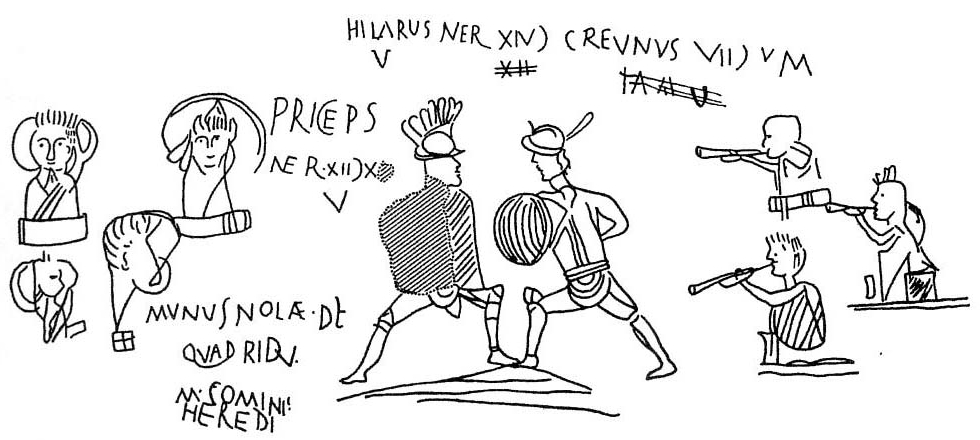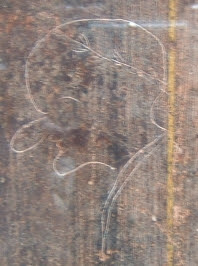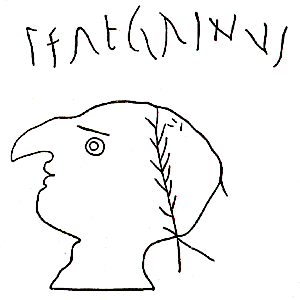Peter Kirby wrote: ↑Fri Mar 08, 2024 10:25 pm
This makes the date of this graffito 179/180.
Greg Synder wrote a paper identifying a different inscription as Christian / Valentinian and second century.
https://www.academia.edu/2702572/A_Seco ... Via_Latina
Based upon detailedpaleographical arguments, Margherita Guarducci placed it in the Antonine period.[6] Angelo Coppo also places the inscription in the second century.[7] Peter Lampe, who bases his reconstruction o a Valentinian communityon the Via Latina largely on this inscription and on that of Flavia Sophe, also follows Guarducci in accepting the Antonine date of NCE 156.[8]
6. Margherita Guarducci, “Iscrizione cristiana del II secolo nei Musei Capitolini,” in Bullettino della commissione archeologica comunale di Roma 79 (1963–64): 117–34,ollowed by “Valentiniani a Roma,” and “Ancora sui valentiniani a Roma,” Römische Mitteilungen
81 (1974): 341–43.
7. Angelo Coppo, “Contributo all’interpretazione di un’epigrae greca cristiana deiMusei Capitolini,” Rivista di archeologia cristiana 46 (1970): 138.
8. Peter Lampe, From Paul to Valentinus: Christians at Rome in the First TwoCenturies, trans. Michael Steinhauser, ed. Marshall Johnson (Minneapolis, MN: For-tress Press, 2003), 299–300.
Nevertheless, the relatively narrow window of time during which these particularletterorms were in use allows for more than normal confidence where dating is concerned
The results from Naples point in the same direction as the Roman evidence: inscriptions featuring these letter forms date almost exclusively from the first or second century. In sum, Guarducci’s case for a second-century date for NCE156 is stronger than ever.
Both of these men seem to have presented themselves as philosophers and it may be the case that the Valentinian Christians behind NCE 156 thought of themselves in similar terms, as a philosophical group and not as a religio non licita. Furthermore, as I will argue in what follows, the Christian character of NCE 156 would have been clear to insiders, but not glaringly obvious to someone unfamiliar with the theology of the group who commissioned the inscription.
I suggest that while the people who commissioned and displayed this inscription were indeed Christians with Valentinian tendencies, they were fully aware of the conventions of Greek funeral epigrams and crafted this inscription in light of these con-ventions. I will argue that the inscription is best understood as a funeral epigram commemorating the death of a Valentinian Christian, not as a “baptismal inscription.”
In light of these observations should NCE 156 still be regarded as aChristian inscription? Several reasons to affirm its Christian character maybe given. The chief reason remains the language of “praising the father and glorifying the son.” One might conceivably praise a father for rear-ing a promising child, now untimely dead, but the phrase “praising the father and glorifying the son” is exceedingly difficult to reconcile with the established patterns of funeral rhetoric.
Moreover, the vocabulary of NCE 156 sits most comfortably within a Christian ambit. The accusative object with πεινάω is unusual: the earliest attestation of this usage is found in Matt 5.6. The use of “truth” (ἀληθεία) in line 4 is difficult to understand from the standpoint of a tragic reading. The term is quite rare, at least among the funeral inscriptions. We encounter it only once in Peek’s collection (565.1), where a certain Agelaos is said tohave “lived with truth” (μετ᾽ ἀληθείας ζήσαντα). “Flow” (ῥύσις) does not occur even once in Peek. However, both terms fit easily with a Christianreading: ἀληθεία occurs frequently in Christian texts, Johannine literature in particular, as in John 1.17 (“Grace and truth came through JesusChrist”), or John 4.24 (“God is spirit and those who worship him mustworship in spirit and in truth”). Water imagery and language of fowingis also found, as in John 7.38 (“Whoever believes in me, from his heart will flow [ῥέω] streams of living water”), or John 4.14 (“Whoever drinks of the water that I give will never thirst again, but the water I will give will become in him a spring of water [πηγὴ ὕδατος] bubbling up to eternallie”). This latter passage, which occurs in the context of Jesus’ conversa-tion with the Samaritan woman at a well, resonates with ῥύσις, especially with the restoration of πηγή at the beginning of the line. We know that Valentinus and Valentinians (e.g., Heracleon) after him were quite enam-ored of the Gospel of John, so the presence of Johannine vocabulary in NCE 156 may be taken as support for the claim that the inscription is Valentinian in character.







